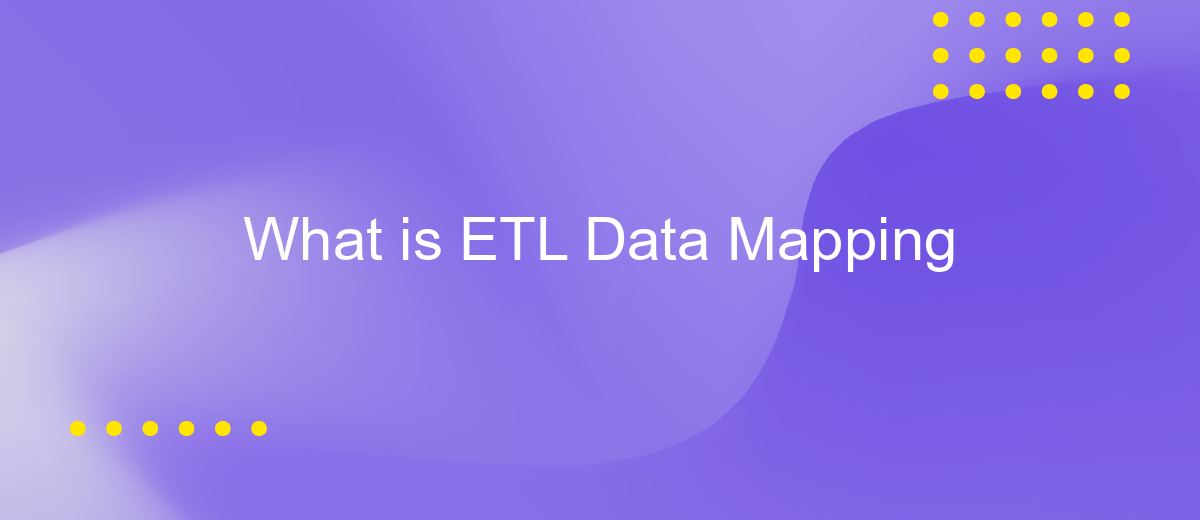What is ETL Data Mapping
ETL Data Mapping is a critical process in data management that involves defining how data from various sources is transformed and loaded into a target system. It ensures that data is accurately and efficiently transferred, maintaining consistency and integrity. This article explores the fundamentals of ETL Data Mapping, its importance, and how it facilitates seamless data integration within diverse business environments.
Introduction
ETL (Extract, Transform, Load) data mapping is a crucial process in data integration and management. It involves extracting data from various sources, transforming it into a suitable format, and loading it into a target database or data warehouse. This process ensures that data is accurately and efficiently transferred, making it accessible for analysis and decision-making.
- Extract: Gathering data from multiple sources, such as databases, APIs, and flat files.
- Transform: Converting the extracted data into a consistent and usable format.
- Load: Storing the transformed data into a target system for further use.
Effective ETL data mapping is essential for maintaining data integrity and consistency across different systems. Tools like ApiX-Drive can simplify this process by providing seamless integrations between various applications and services. By automating data extraction, transformation, and loading, ApiX-Drive helps organizations save time and reduce the risk of errors, ensuring that their data is always up-to-date and reliable.
Understanding ETL Data Mapping

ETL data mapping is a critical process in data management, where data from various sources is transformed, cleaned, and loaded into a target system. This process ensures that data is accurately transferred and remains consistent across different systems. It involves defining how source data fields map to target data fields, which can include complex transformations and business rules. Proper ETL data mapping ensures data integrity and quality, making it a foundational step for effective data analysis and reporting.
One of the key aspects of ETL data mapping is the use of integration tools to streamline the process. Services like ApiX-Drive can automate the mapping and integration of data across multiple platforms, reducing the manual effort required and minimizing errors. ApiX-Drive offers a user-friendly interface to set up data flows, transformations, and mappings, enabling seamless data integration without the need for extensive coding. This not only saves time but also ensures that the data mapping process is efficient and reliable.
Types of Data Mapping

Data mapping is a crucial step in the ETL (Extract, Transform, Load) process, ensuring that data from various sources is accurately transformed and loaded into the target system. Different types of data mapping techniques can be employed depending on the complexity and requirements of the data integration project.
- Manual Data Mapping: This method involves manually defining the relationships between source and target data fields. It is suitable for small projects with limited data complexity but can be time-consuming and error-prone for larger datasets.
- Semi-Automated Data Mapping: Tools and scripts assist in the mapping process, reducing manual effort while still requiring human oversight. This approach balances efficiency and control, making it ideal for medium-sized projects.
- Automated Data Mapping: Advanced tools like ApiX-Drive can automatically map data fields based on predefined rules and AI algorithms. This method is highly efficient for large-scale projects, ensuring accuracy and saving significant time and resources.
Choosing the appropriate data mapping technique depends on the scale and complexity of the data integration task. Automated tools such as ApiX-Drive offer robust solutions for seamless data mapping, making them invaluable for large and complex ETL processes.
Benefits of Data Mapping

Data mapping is a crucial process in ETL (Extract, Transform, Load) that ensures data consistency and accuracy during the transfer between different systems. By creating a clear mapping strategy, businesses can streamline their data integration processes, leading to more efficient data management and better decision-making capabilities.
One of the primary benefits of data mapping is the ability to automate data workflows. Automated data mapping minimizes human error and reduces the time required for data processing. This is particularly useful for organizations dealing with large volumes of data from multiple sources.
- Improved Data Quality: Ensures data consistency and accuracy.
- Enhanced Efficiency: Speeds up data processing and reduces manual intervention.
- Better Decision-Making: Provides reliable data for analytics and reporting.
- Scalability: Facilitates seamless integration as data volumes grow.
Services like ApiX-Drive offer robust tools that simplify the data mapping process, making it easier to integrate various data sources without extensive coding. By leveraging such platforms, businesses can focus on their core activities while ensuring their data is accurately mapped and readily available for analysis.
Conclusion
In conclusion, ETL data mapping is a crucial process that ensures the successful transformation and integration of data from various sources into a unified format. By meticulously mapping data fields from the source to the target, organizations can maintain data integrity, improve accuracy, and streamline their data workflows. Effective ETL data mapping not only enhances the quality of data but also facilitates better decision-making and operational efficiency.
For businesses looking to simplify and automate their ETL processes, services like ApiX-Drive offer valuable solutions. ApiX-Drive enables seamless integration between different applications and data sources, allowing for real-time data synchronization and reducing the manual effort involved in data mapping. By leveraging such tools, organizations can achieve more efficient data management and focus on deriving actionable insights from their data.
FAQ
What is ETL Data Mapping?
Why is ETL Data Mapping important?
What are the key components of ETL Data Mapping?
How can ETL Data Mapping be automated?
What challenges are associated with ETL Data Mapping?
Do you want to achieve your goals in business, career and life faster and better? Do it with ApiX-Drive – a tool that will remove a significant part of the routine from workflows and free up additional time to achieve your goals. Test the capabilities of Apix-Drive for free – see for yourself the effectiveness of the tool.

